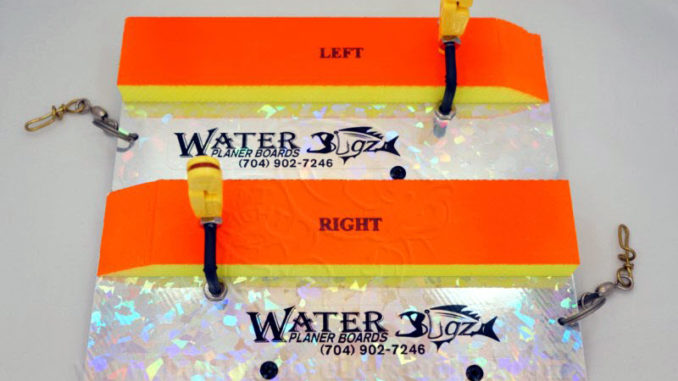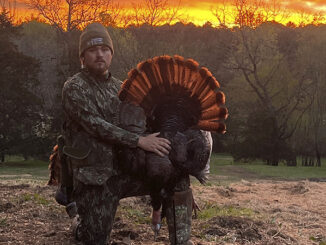
Free-lining is a natural presentation of either live or live bait. Rigs can be as simple as a line with a hook on the end. The baits are then allowed to swim freely behind the boat, often with enough line out to allow the bait or lure to achieve its chosen depth.
Planer boards basically work using the same principal as a free line, with the planer board acting as a wedge to angle the bait away from the boat to either right or left. The board is weighted at the bottom so that it floats in a vertical position. The board employs a tension release clip to hold the line and provides enough tension for the board to pull out to the side.
Boards will be marked as to whether they pull to the right or to the left. When a fish takes the bait and pulls the line, the clip releases the line so the board breaks away. The line is threaded through a snap swivel between the tension clip and the bait. The swivel keeps the board on the line when the board breaks away and keeps the angler from fighting the board’s resistance but still retrieves the board without having to turn back after the fish is boated.
In order to keep the board from sliding down the line and knocking the fish from the hook, it is best to tie a small barrel swivel in the main line approximately 4 to 6 feet from the hook. The swivel will stop the board once it breaks away and gives a good tie point to add a fluorocarbon leader to the end of the main line.
The distance from the board to the bait is no different than the distance used for free-lining. Larger baits that can range further left and right should be deployed on shorter lines to prevent tangling if multiple boards are used on the same side. A good rule of thumb is the board that’s the greatest distance from the boat should be the longest line, and the closest to the boat the shortest, with graduations in between.





Be the first to comment